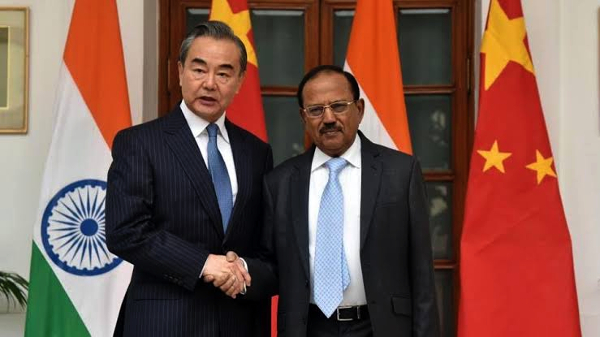India has linked China’s “early harvest” proposal for settling the Sikkim land boundary to the simultaneous demarcation of the middle sector in Uttarakhand as a stepping stone to phased resolution of the decades-old border dispute.
New Delhi and Beijing exchanged maps of the middle sector as far back as March 2002, but there has been no movement since then.
The 22nd dialogue of the Special Representatives (SR) on the boundary issue between national security adviser Ajit Doval and state councillor Wang Yi in New Delhi on December 21 ended with both sides committed to maintaining peace and tranquillity along the 3,488-km Line of Actual Control (LAC).
While the Chinese statement on the talks said the two sides should “promote early harvest consultations”, there was no mention of such proposals in the statement from the Indian side.
The Chinese side says the “early harvest” proposal was submitted to external affairs minister S Jaishankar when he met Wang Yi in Beijing in August. The Indian side says the demarcation of the border in the Sikkim sector as a “low hanging fruit” was mentioned by the Chinese special representative some time ago. HT has previously reported on this proposal.
The Indian side has now indicated that it wants the Chinese to show sincerity in equal measure by simultaneously resolving the middle sector along with Sikkim as the People’s Liberation Army (PLA) is in a vulnerable position in the latter with the Indian Army and Bhutan Army dominating Chumbi Valley from both sides.
“The Sikkim proposal is not so simple, as any Indian agreement on demarcation will be used by Beijing to settle the boundary with Bhutan with an eye towards the Doklam plateau. If India settles Sikkim, where it dominates both Chumbi Valley and Finger Area up in the north, then China will expand its Chumbi Valley area and increase pressure on the Siliguri corridor in West Bengal,” said a former Indian Army chief.
Settling the border in the Sikkim sector will also have a direct bearing on Doklam, the site of the 2017 military stand-off, as the India-China-Bhutan trijunction at Batang La will be in contest, with the Chinese interpretation of the tri-junction at Gyemochen, further south of Batang La and at the start of Jhampheri ridge.
“If the Chinese get to Jhampheri ridge, then the entire Siliguri corridor becomes extremely vulnerable to the PLA. The lights of Gangtok are visible from Jhampheri ridge,” said a China expert who declined to be named.
However, India is willing to look at China’s Sikkim proposal — believed to be the brainchild of Luo Zhaohui, the former envoy to New Delhi and now the vice minister responsible for Asia at the foreign ministry in Beijing — if China resolves the middle sector at the same time.
After the exchange of maps on the middle sector in March 2002, four areas of differences emerged. They are Kaurik (250 sq km), Shipki la (64 sq km), Pulan Sumda (1,336 sq km) and Barahoti Plains (750 sq km).
Just as PLA is vulnerable in Chumbi Valley, the Indian national security establishment is concerned about the middle sector, which is just 400km to 500km from New Delhi. Any Chinese aggression in this sector will lead to vertical escalation from the Indian side, given its proximity to the political heart of the country.
Former foreign secretary Kanwal Sibal said: “China’s early harvest proposal violates the 2005 agreement on the guidelines and parameters for resolving the boundary issue as it clearly says that it has to be a package deal. This is the usual Chinese way of walking out of agreements. This early harvest proposal relates to the Sikkim border which is the only one which is settled. So where is the early harvest for India in this? On the contrary, China will seek to settle the tri-junction in its favour through this proposal which is unacceptable. Is China ready to accept tri-junction as per the Indian position?”
Source:HT
Image Courtesy:Hindustan Times
You may also like
-
IAF Aircraft Set Course For Exercise Eastern Bridge VII At Oman
-
India-us Working Together In Areas Like Critical Minerals, Supply Chains And Advanced Technologies: Shri Piyush Goyal
-
Defence Secretary to co-chair 5th India-Philippines Joint Defence Cooperation Committee meeting in Manila
-
2nd India-Japan Finance Dialogue held in Tokyo on 6th September, 2024
-
Prime Minister, Shri Narendra Modi welcomes Crown Prince of Abu Dhabi
